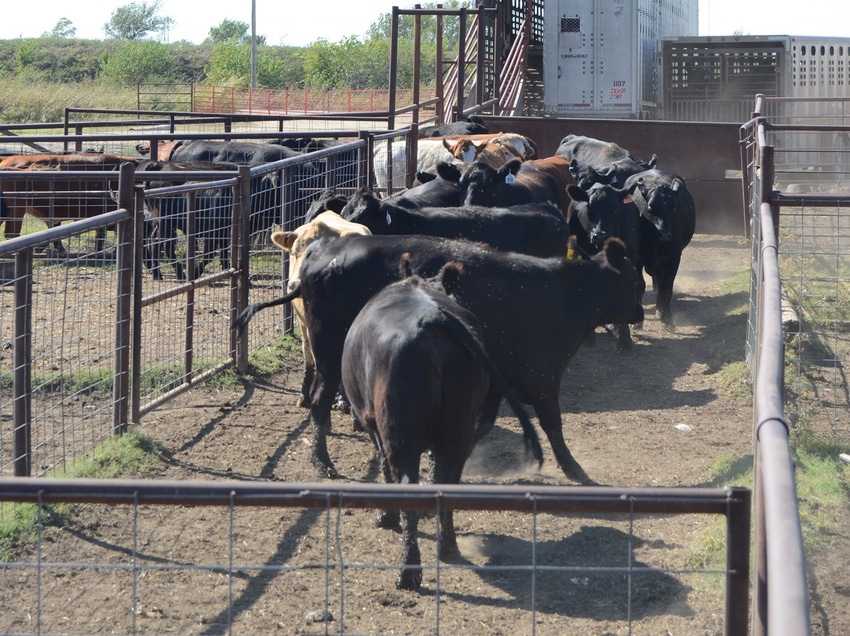January 31, 2020

Steel costs money. It costs a lot more money when it’s put into a new Silverado or a Mustang, but even in something as rudimentary as a cattle facility it still costs money. As the cattle business is a low-margin affair, our goal is to keep our costs low to stay in the black.
However, it’s not feasible to administer treatments or perform procedures on cattle without some sort of restraint. Nor is it safe to use marginal equipment. With these things in mind, how much facility can you justify acquiring for your cattle business?
What’s the minimum?
Let’s start this conversation with the minimum requirements. Even if you have 25 cows and a bull, there are still a few essentials to have so you can restrain an animal effectively. The most minimal option is a catch pen that allows you to load the animals onto a trailer to haul them to a functional working facility. If you utilize your veterinarian for nearly all treatments, this is probably all you need.
However, for much of our readership there is a need to restrain animals on the farm. If we are only looking at treating individual animals, such as being able to pull calves or treat an occasional sick animal, a quality head gate is the minimum. For calving purposes, this head gate should be attached to an alley that allows at least one side to swing open. There should be enough room behind the head gate for the calf-jack to have at least two feet of clearance from a wall or another obstacle.
For people who intend to process cattle at the farm, having an adjustable alley of 20 feet long or greater is necessary. This can attach to a Bud Box or a tub. I prefer the Bud Box: It’s significantly cheaper and the cattle flow through it better. Unless the veterinarian brings a chute when you process cattle, having a chute with an adjustable squeeze, a tail gate to keep cattle from moving from the alley into the chute and some sort of neck extension on the head gate is a must. The reason for all these aspects is safety. If you’ve ever paid for a broken arm on a person or had a broken leg on a calf, you realize that a safe system is the least expensive system.
Note that nowhere does this post mention buying new equipment. Well-designed and functional used equipment is an excellent choice for most cow-calf operations. Even small feedyards or stocker calf operators might find used equipment is the most cost effective. My caveat is some old equipment is poorly designed and not safe to use. If you are unsure, ask your veterinarian before you purchase. Veterinarians use more brands of cattle equipment than most anyone and have seen the injuries from the bad ones. Since your vet might use it in the future, he or she will happily tell you if that is a good item or not.
How much facility do I need?
Once the minimums are met, the real question comes in as how much facility do you need? The best starting point is to determine how much you will use the facility and how much help you have. For cow-calf producers, multiply the number of cows you have times the number of chute trips those cows and their calves make to get the total number of head moving through the system. The same thing can be done with a feedyard. Multiply the capacity by the number of trips in your protocol, times the number of turns per year.
For example, you may have a 200-head cow herd. If you artificially inseminate those cows, preg check in the fall, do a round of scours shots, and then work calves spring and summer, that’s seven trips the herd makes through the chute. Multiplied by 200, it means 1,400 animals will pass through the facility.
Then look at the cost of the facility, figuring a seven-year depreciation schedule.
For our example herd, 9,800 animal trips will occur through that cattle facility over that time period. We can then use that number of trips and compare it to the projected cost of the facility to decide how much each trip costs.
This trip cost allows us to compare different components of a facility and their associated costs. As an example, deciding between a manual or hydraulic chute becomes clearer when we know how much we plan on using the chute. For this herd, if there is a $6,000 difference between manual and hydraulic that means each trip will cost 61 cents more. Now we can quantify what the decreased wear and tear on the chute operator or better cattle flow actually costs.
I like this system better than simply figuring the number of head you have to decide on what kind of cattle equipment you need. If our example herd only ran the cows through once per year to preg check and give shots, and the calves only once per year for preconditioning, then the cost per head for the hydraulic chute would be $2.14 over the manual chute. The increased number may change the decision.
It’s easy to overspend on a cattle facility. But we have to have a facility that works in a manner that is safe for the cattle and the people working with the cattle. Once you have achieved the minimum, compare the cost of additions to a facility or to a new facility by quantifying them based on how much they will be used to find what works for you at a price that fits your budget.
About the Author(s)
You May Also Like






